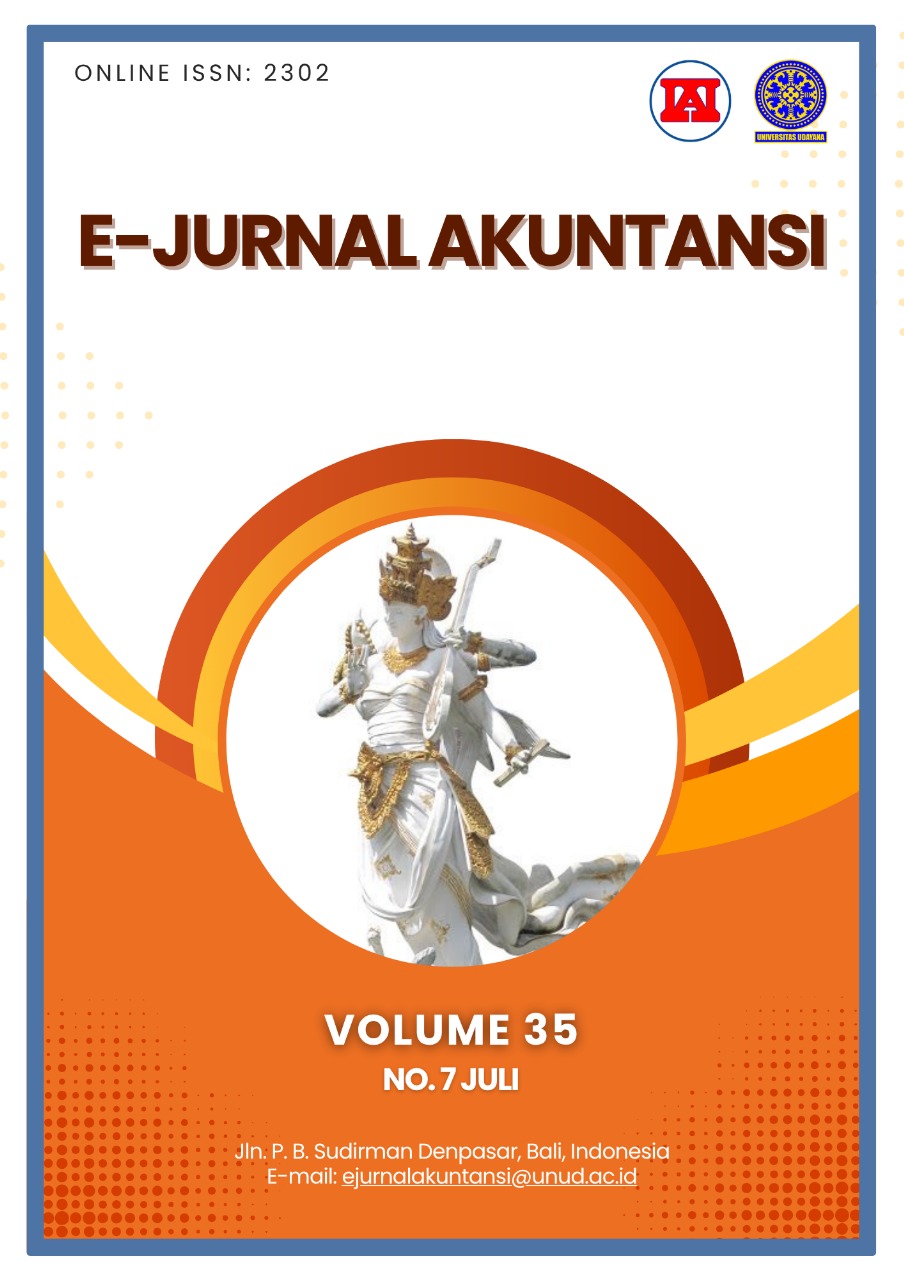Evaluation of Risk Management Implementation in Import Duty Tariff Determination Based on Ministerial Regulation
Abstract
The potential for shortfalls in state revenue and recurring findings in the Internal Control System indicate the existence of potential risks that have not been effectively managed. This study aims to assess the alignment of risk management implementation at XYZ Government Office with the applicable Ministerial Regulation on risk management practices. This study uses a qualitative case study method, data were gathered through triangulation of methods (documentation, interviews) and sources (key informants). The findings reveal that risk management is perceived merely as an administrative routine. Consequently, the entire process, including identification, analysis, evaluation, and mitigation, is not optimally implemented. This results in a failure to identify root causes and a tendency to underestimate true risk levels.
Keywords: Risk Management; Import Duty; State Revenue; Public Sector
Downloads
References
Al-Shbail, T. (2020). The impact of risk management on revenue protection: an empirical evidence from Jordan customs. Transforming Government: People, Process and Policy, 14(3), 453–474. https://doi.org/10.1108/TG-02-2020-0025
Anggraini, D. N., & Setyaningrum, D. (2024). Risk Identification and Management of State-Owned Assets : A Case Study of the ABC Office. E-Jurnal Akuntansi, 34(12), 3127–3143.
Biljan, J., & Trajkov, A. (2012). Risk Management and Customs Performance Improvements: The Case of the Republic of Macedonia. Procedia - Social and Behavioral Sciences, 44, 301–313. https://doi.org/10.1016/j.sbspro.2012.05.033
BPK RI. (2022). Laporan Hasil Pemeriksaan Atas Laporan Keuangan Kementerian X Tahun 2021 (p. 6).
BPK RI. (2023). Laporan Hasil Pemeriksaan Atas Laporan Keuangan Kementerian Keuangan Tahun 2022 (p. 14736).
BPK RI. (2024). Laporan Hasil Pemeriksaan Atas Laporan Keuangan Kementerian X Tahun 2023.
Campbell, R., Goodman-williams, R., Feeney, H., & Fehler-cabral, G. (2018). Assessing Triangulation Across Methodologies, Methods, and Stakeholder Groups: The Joys, Woes, and Politics of Interpreting Convergent and Divergent Data. 41(1). https://doi.org/10.1177/1098214018804195
Creswell, J. W., & Creswell, J. D. (2018). Research Design Qualitative, Quantitative, and Mixed Methods Approaches. In Writing Center Talk over Time (5th ed.). SAGE Publications. https://doi.org/10.4324/9780429469237-3
Ditjen XY. (2024). Laporan Kinerja Direktorat Jenderal XY Tahun 2023. 0, 1–23.
Fiantika, F. R., & Maharani, A. (2022). Metodologi Penelitian Kualitatif (Issue March).
Firdiansyah, A. (2019). Tinjauan Terhadap Identifikasi Risiko Penetapan Tarif Kepabeanan Pada Kantor Pelayanan Utama Bea Dan Cukai Tanjung Priok. Jurnal Perspektif Bea Dan Cukai, 3(1), 133–151. https://doi.org/10.31092/jpbc.v3i1.424
Gani, A. S. A., Salim, B., & Mat Udin, N. (2020). The Implementation of Risk Management in Malaysian Public Sector to Sustain Federal Government’s Revenue. International Journal of Accounting, Finance and Risk Management, 5(2), 76. https://doi.org/10.11648/j.ijafrm.20200502.12
Ilias, A., Baidi, N., Ghani, E. K., & Omonov, A. (2023). A Qualitative Investigation on Risk Management Implementation in the Malaysian Public Sector. Economic Affairs (New Delhi), 68(2), 1247–1261. https://doi.org/10.46852/0424-2513.2.2023.30
Kementerian X. (2021). Peraturan Menteri X Nomor 222 Tahun 2021 tentang Manajemen Risiko Pengelolaan Keuangan Negara.
Kementerian X. (2022). Keputusan Menteri X Nomor 105 Tahun 2022 tentang Petunjuk Pelaksanaan Manajemen Risiko Pengelolaan Keuangan Negara.
Leva, M. C., Balfe, N., McAleer, B., & Rocke, M. (2017). Risk registers: Structuring data collection to develop risk intelligence. Safety Science, 100, 143–156. https://doi.org/10.1016/j.ssci.2017.05.009
Nafi’ah, K., Nurkholis, N., & Ghofar, A. (2023). Is the Implementation of Risk Management Just a Formality? Evidence from a Public Sector Organization. At-Taqaddum, 15(2), 97–107. https://doi.org/10.21580/at.v15i2.16458
Nuha, M. U. (2018). Pajak dan Pembangunan Nasional. Direktorat Jenderal Pajak. https://www.pajak.go.id/en/artikel/pajak-dan-pembangunan-nasional
O’Har, J. P., Senesi, C. W., & Molenaar, K. R. (2017). Development of a risk register spreadsheet tool for enterprise- and program-level risk management. Transportation Research Record, 2604(2604), 19–27. https://doi.org/10.3141/2604-03
Pramuningtyas, A., & Djakman, C. D. (2024). Evaluasi Penerapan Manajemen Risiko di Direktorat Jenderal PQR Berdasarkan Pedoman Menteri. E-Jurnal Akuntansi, 34(7), 1667–1682.
Rana, T., Wickramasinghe, D., & Bracci, E. (2019). New development: Integrating risk management in management control systems—lessons for public sector managers. Public Money and Management, 39(2), 148–151. https://doi.org/10.1080/09540962.2019.1580921
Tudor, F., & Gavrilă, S. P. (2024). Strengthening Cooperation for Customs Risks Management At European Borders in the New Regional Security Context. SOCIETIES & SUSTAINABILITIY - Scientific Peer-Reviewed Journal of the SWS Scholarly Society, 1(1), 23–30. https://doi.org/10.35603/sas24.1.03
Widdowson, D. (2020). Managing customs risk and compliance: an integrated approach. World Customs Journal, 14(2), 63–80. https://doi.org/10.55596/001c.116418

This work is licensed under a Creative Commons Attribution-ShareAlike 4.0 International License.

















